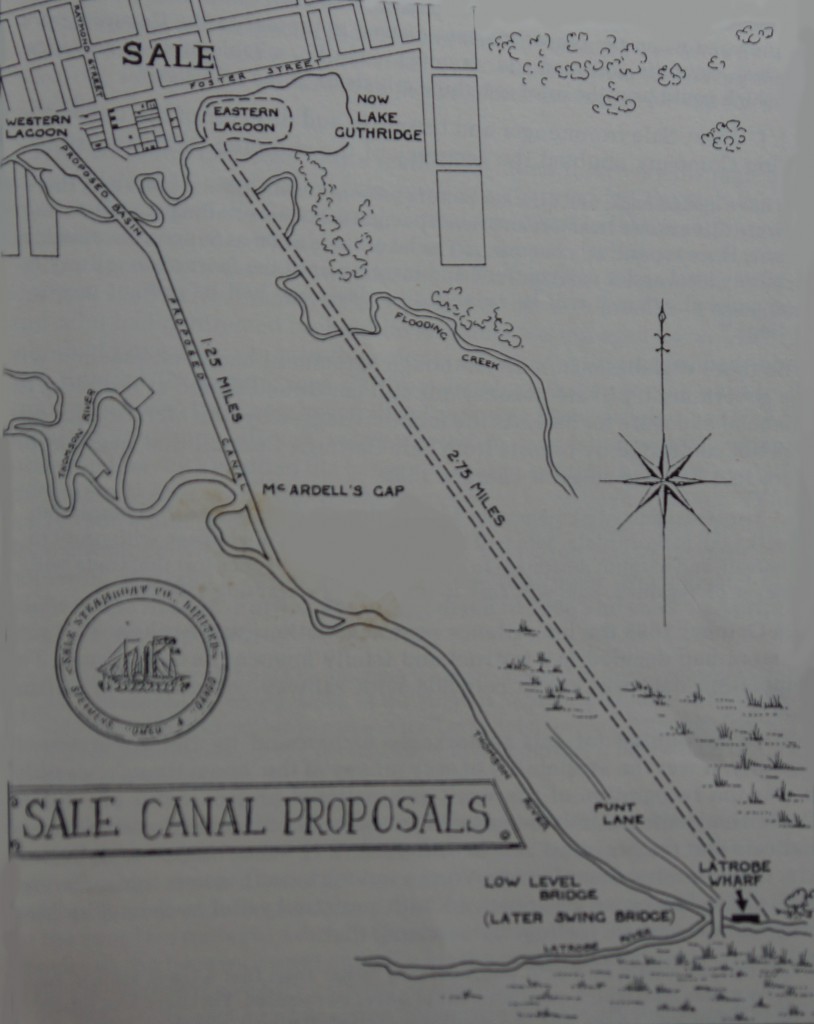As trade increased within the Gippsland region and to destinations beyond, the desire to connect Gippsland’s Steamers directly to the railway in the township of Sale, rather than have to unload at the Latrobe Wharf and travel some 3 miles (5 km) overland, saw the plans for a canal, a swing bridge and a port come to fruition.
 The Sale Canal works began in 1886. They were carried out in three stages. The digging of the canal was by shovel and wheelbarrow, supplemented by horse scoops, a stationary traction engine and the dredge ‘Wombat’. The soil was distributed over the adjacent low lying ground. It took many years for the mud and bareness of the banks to revegetate.
The Sale Canal works began in 1886. They were carried out in three stages. The digging of the canal was by shovel and wheelbarrow, supplemented by horse scoops, a stationary traction engine and the dredge ‘Wombat’. The soil was distributed over the adjacent low lying ground. It took many years for the mud and bareness of the banks to revegetate.
On the 1st September 1890, the canal railway was opened for business which marked the completion of the rail-water connection. A hastily arranged ceremony celebrated this remarkable combination of infrastructure which are all still regarded as marvels of engineering, design and building achievement.
From as early as 1857 paddle and screw steamers had been the heroes of transport in the region. It took over thirty years to build the infrastructure to efficiently link Gippsland’s Steamers to Melbourne via The Entrance (completed in 1889) and to the rail via the canal (completed in 1890). By this time the depression hit with a vengeance – railways were penetrating further and further into Gippsland – therefore slowly, but surely, eroding the transport trade from the steamers.
Incidentally, only a few decades later, road transport lead to the demise of the railways . . .
View other important events in the history of Gippsland’s Steamers . . .
View other important events in this Region’s History . . .
